Pneumatic tools come in different sizes and shapes. They are suitable for countless applications, from domestic use to heavy-duty industries like oiling and mining.
In this article, you will find an extensive list of pneumatic tools and their most common uses, providing you with a clear picture of the pneumatic tools universe.
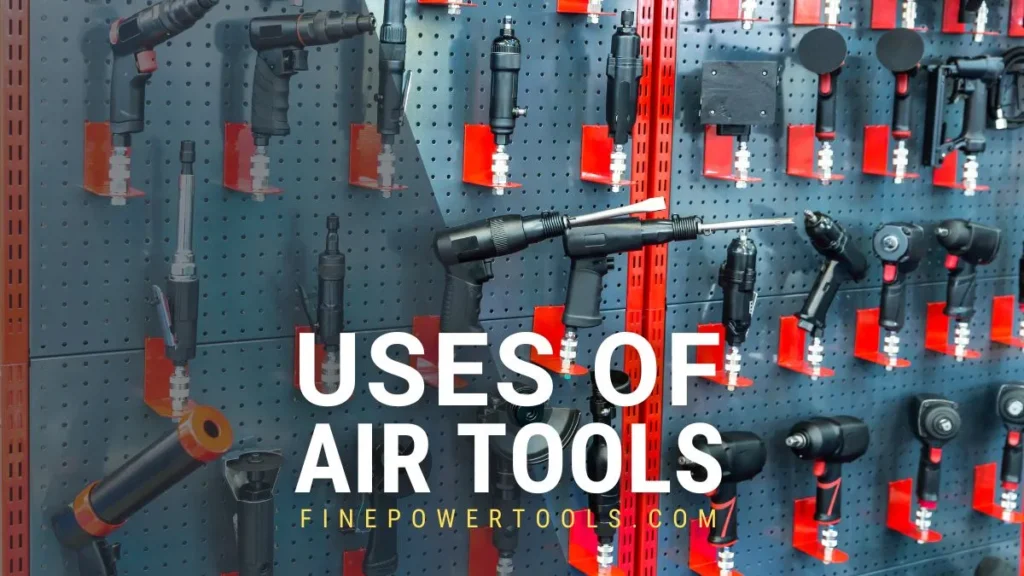
The compressor’s size needed to drive these tools varies depending on their size, power, and application. I arranged the list into three categories: linear-motion, rotary, and air-blowing tools. It’s also ordered by size, but it’s important to note that the sturdier models of some tools may be as big or larger than the smallest versions of the items listed in the following categories.
Pneumatic Nail Gun
This pistol-like tool uses high-pressure air to apply nails in a split second. It comes in different configurations, depending on the nails’ size and power levels, so you may need to have more than one type in your toolbox.
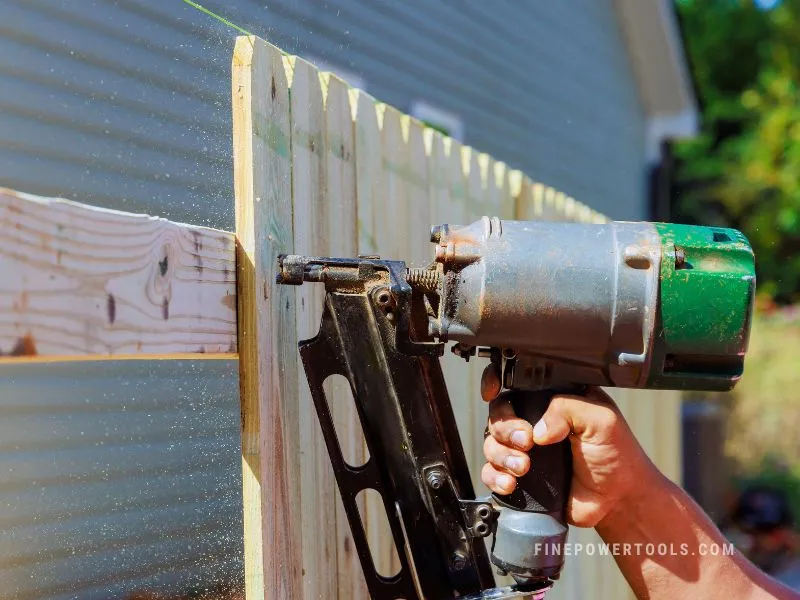
Pneumatic or air nail guns are commonly used in construction for wood and steel framing, securing panels, building decks, stairs, and more. Air nailers are also practical for woodworking, for example, in the furniture industry.
Uses
- Construction
- Woodworking – Carpentry
- DIY/Hobbies
Pneumatic Stapler
Also called an air stapler, this tool is similar to a nail gun. The difference relies on the type of fasteners it handles and its use.
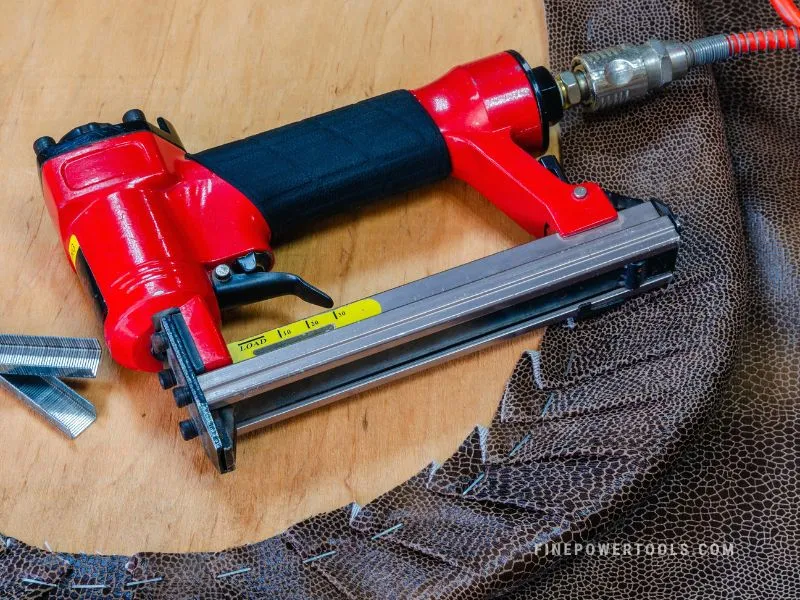
It’s very practical in the construction industry to secure insulation panels, but it’s also great for applying carpets and upholstery jobs where you need speed and precision.
Uses
- Packaging and transport
- Upholstery
- DIY/Hobbies
- Construction
- Woodworking
Pneumatic Reciprocating Saw
If you need to cut through materials really fast, a reciprocating saw is what you need.
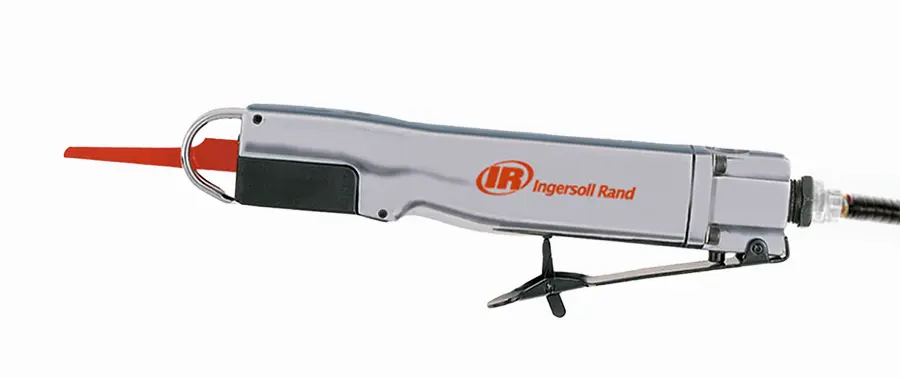
Unlike the electric Sawzall which is used for demolition jobs, the smaller reciprocating air saw is used for cutting intricate shapes. I use this tool to cut fiberglass, resign, and cut accurate openings on autobody panels, bumper, and sheet metal.
Depending on its type and blade, it can cut wood, sheet metal, piping, masonry, and many other materials.
On the other hand, electric reciprocating saws are primarily used in construction and demolition. From light and small cordless models to industrial-type heavy-duty corded models, these tools are used in many other industries, from woodworking and construction to demolition and emergency services. The sturdiest and most powerful reciprocating saws are used by firefighters to cut a crashed vehicle and rescue the victims, for example.
Uses
- DIY/Hobbies (small models)
- Automotive (Body shop repair, metal fabrication, exhaust jobs)
- Metalworking
- Plumbing and HVAC
Pneumatic Shears
These amazing tools cut sheet metal and aluminum sheets like butter and also work with some plastics.
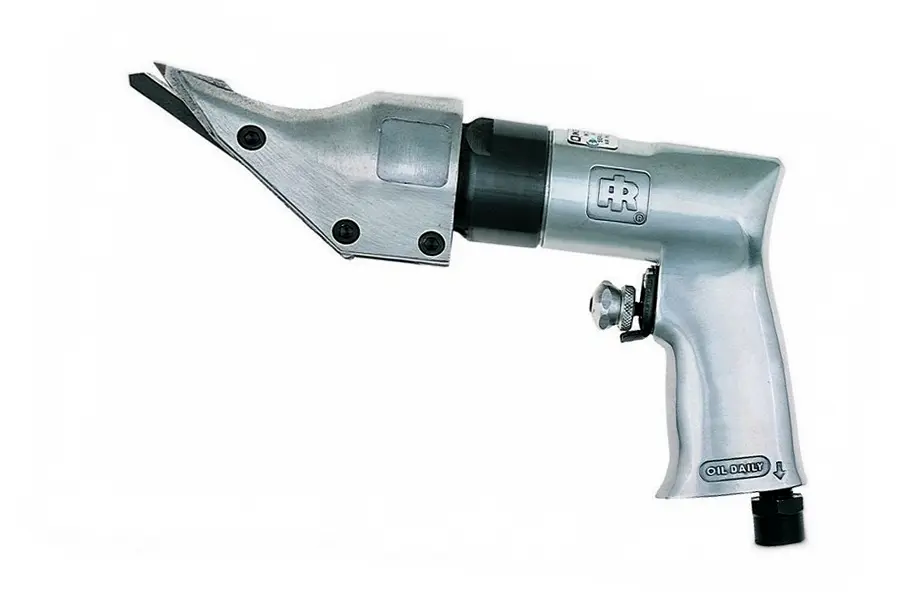
In trained hands, they cut fast and precisely, making them essential in many industries. Also called air shears, they don’t need much maintenance and the blades often don’t require to be replaced during the tool’s lifetime.
Uses
- Construction (i.e., cutting metal studs, roofing, and flashing)
- Metal fabrication in industries such as the automotive, aeronautical, and maritime
- HVAC and industrial maintenance
Needle Scaler
A pneumatic needle scaler is a tool powered by compressed air that moves a cluster of small, pointed needles that rapidly hammer against surfaces to remove rust, old paint, or coatings without damaging the underlying material. This tool is ideal for preparing metal surfaces before painting.
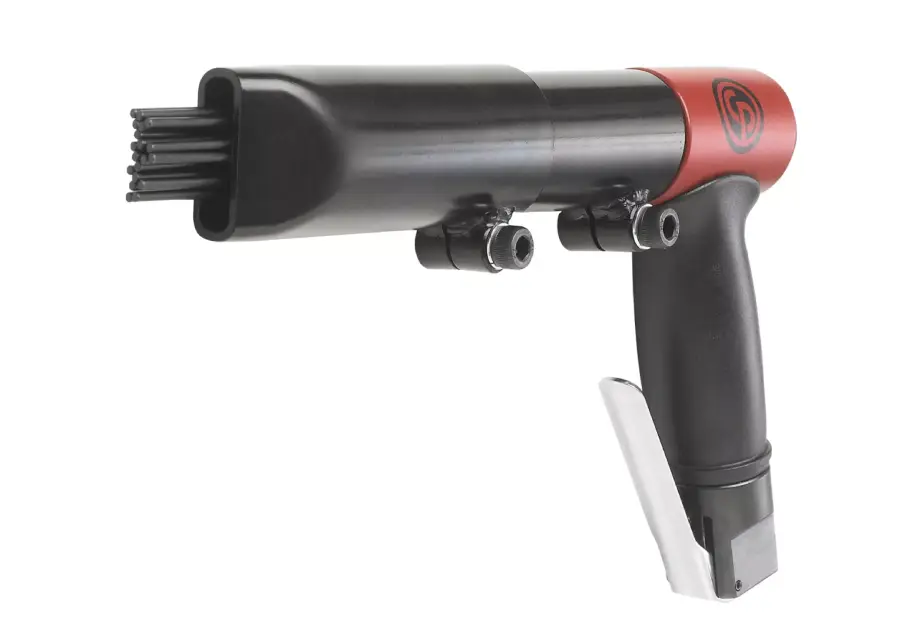
It works like an enhanced sandblaster for metal parts, including removing barnacles from ships’ hulls. It’s also great for restoration jobs, helping remove stubborn rust in hard-to-reach areas while being gentle with the metal underneath.
Uses
- Maritime industry (i.e., hull repair and pre-paint preparation)
- Industrial parts pre-paint preparation
- Restoration of metal parts (automotive, furniture, and any other metallic parts)
Pneumatic Caulking Gun
This tool helps to apply sealant by simply depressing the trigger. It’s very practical for professional use, for example, jobs requiring sealing several joints, seams, and pipe fittings.
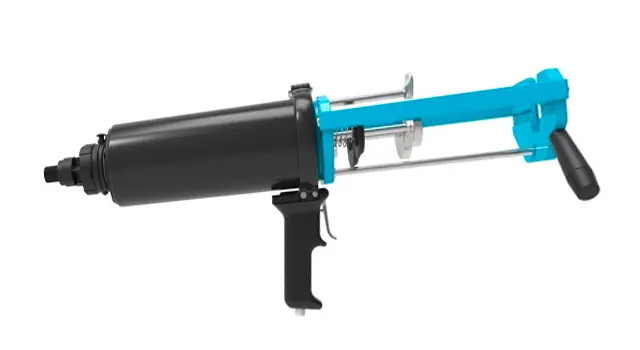
The biggest advantage of an air caulking gun is the amount of push force it can output.
For example, the caulk gun in the image below has a maximum thrust of 5kN or 1124 lbs. In comparison, the Ryobi 18V electric caulking gun has a push force of 500lbf.
If you just have to fix a small leak eventually, a manual caulk gun is more practical, as the preparation to start using one of these would take more time than it would take you to do the job.
Uses
- Automotive (For applying sealant or adhesives on large surfaces or extensions)
- Aircraft Industry
- Construction (Roofing, flaring, applying sealant or glue in large amounts)
- Manufacturing (For processes that require manually operated sealant or glue application)
- Maritime Industry (for sealing and waterproofing jobs)
- Plumbing and HVAC
Pneumatic Rivet Gun
This tool uses pneumatic force to apply rivets fast and effortlessly. It’s incredibly useful for jobs that require repetitive riveting.
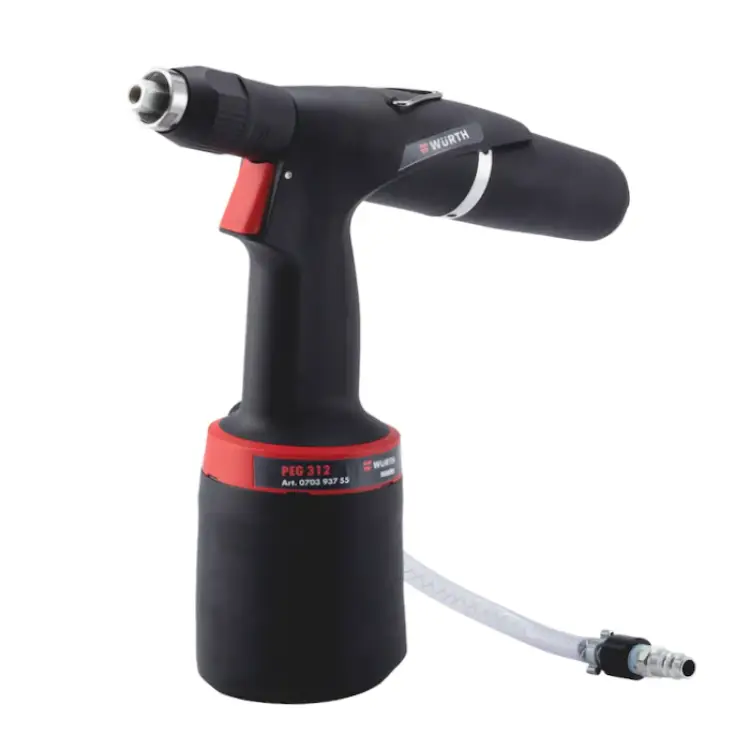
A pneumatic riveter is essential in an assembly line, and it’s also great for auto body shops and custom shops that use pop rivets.
Uses
- Automotive Industry (Auto repair shops, but are still also used in some auto assembly lines, custom projects such as hot rods, and others)
- Aircraft Industry (Holding interior panels and other components in place)
- Construction
- Manufacturing (Pneumatic riveters are used in many production and assembly lines worldwide)
- Maritime industry (similar to their use in the aircraft industry)
- Metalworking
Air Chisel
These tools share the same working principle as their bigger brothers, the jackhammers. They are small and practical and can be used in domestic or professional jobs.

They are of excellent aid for automotive repair, helping to lose stubborn parts and cutting rivets out, and are also commonly used for sculpting and jobs that need striking but not demolishing power.
Small air chisels are also used for engraving; that’s why some smaller versions are called pneumatic engravers.
Uses
- Automotive (body, suspension, and exhaust jobs, among others)
- Construction (removing soft concrete, masonry, old sealant, etc.)
- Arts and crafts (sculpting stone, engraving metal and hardwood, and more)
- Manufacturing
- Maritime (hulls and decks reparation, sealant removal, etc)
- Metalworking
Jack Hammer
These tools are made with demolition in mind. The difference between an air hammer and a jackhammer is the size; what really matters is they both are efficient in breaking things up quickly.
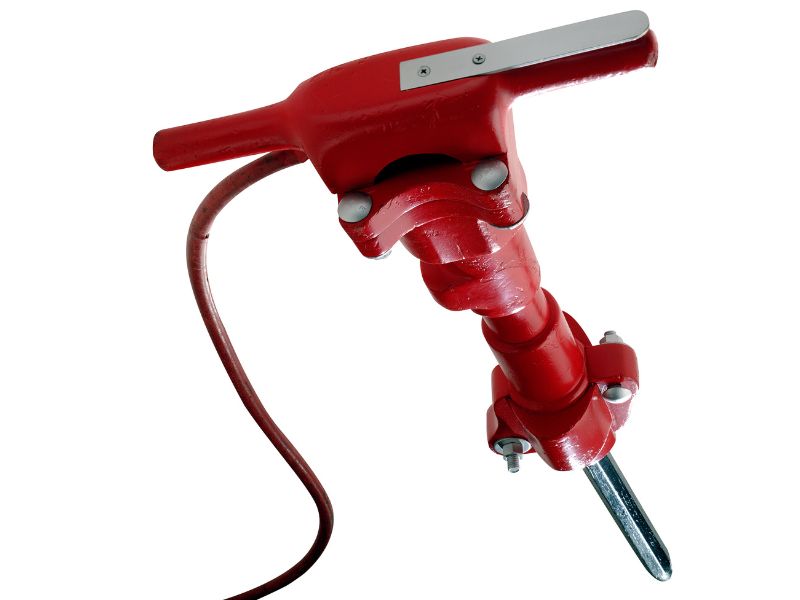
The average air hammer is more commonly seen in the construction/demolition industry and is used to throw walls down. On the other hand, jackhammers are seen breaking concrete on the road and cracking hard stones in the mining industry.
When equipped with a proper chisel, a special type of jack hammer is also used by rescue teams to cut metal.
Uses
- Construction
- Demolition (large scale)
- Mining
- Firefighters and other rescue services
- Road building
Pneumatic Sander
This is the first rotary tool on our list; compressed air makes a disc turn, making sanding and polishing jobs easier. Depending on the disc, it will work as a sander or a polishing machine.
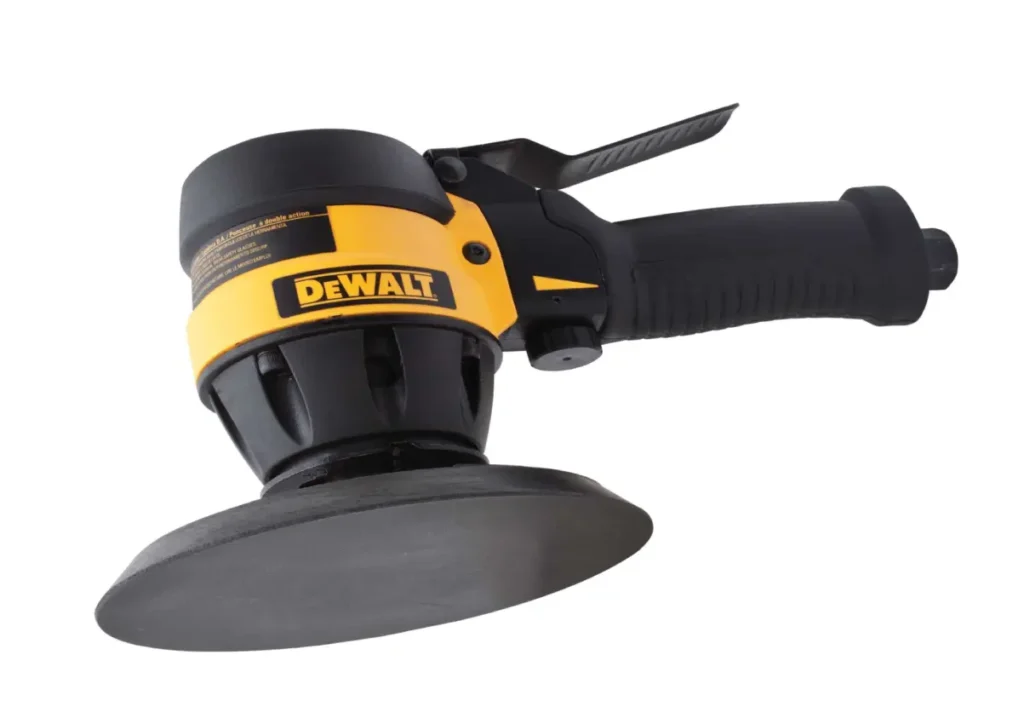
While the simplest models just make the disc spin, there are more complex versions of this tool: orbital sanders and dual-action pneumatic finish sanders, which provide a smoother finish and reduce the possibility of damaging the workpieces due to over sanding.
Uses
- Automotive Industry (Paint job preparation, primer refinishing, car detailing and polishing, among others)
- Metalworking (Pre-paint preparation, surface smoothening)
- Woodworking (Pre-paint preparation, smoothening, and wood shaping)
- DIY/Hobbies
Pneumatic Die Grinder
The die grinder is the big brother of a rotary tool or Dremel. This tool is usually smaller than a pneumatic sander, but it can spin at much higher RPMs.
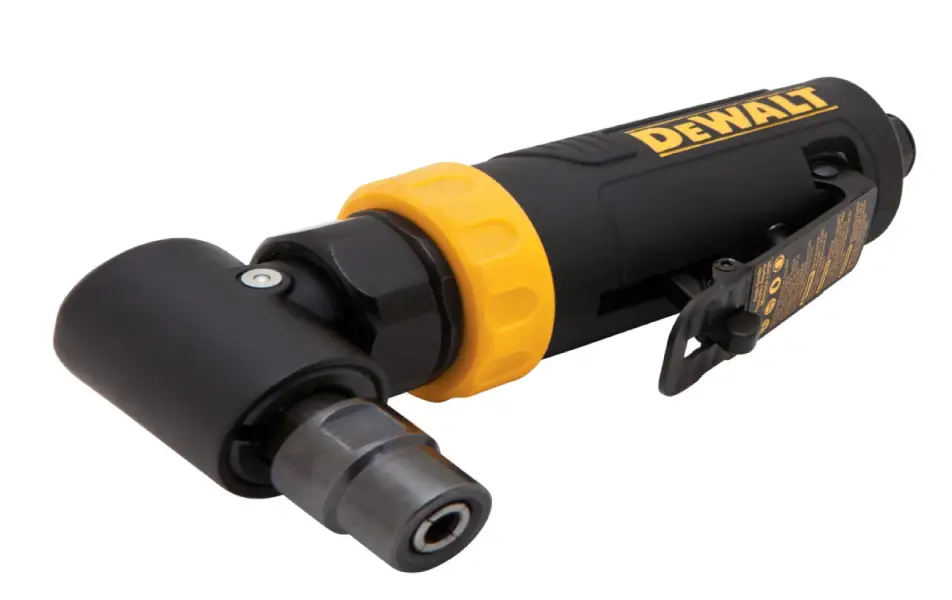
It works similarly to a Dremel and can drive different bits or small discs, which are suitable for eliminating imperfections, enlarging holes, refinishing edges, polishing, and cutting. But die grinders are bigger and more powerful than rotary tools.
It’s perfect for working on metal and wood in different industries.
Uses
- DIY/Hobbies
- Automotive
- Maritime
- Metalworking
- Woodworking
Pneumatic Screwdriver:
Similar to a pneumatic drill, this tool features very accurate torque control. A pneumatic or air screwdriver is great for repetitive processes like assembly lines, where speed, precision, and fastening consistency are key.
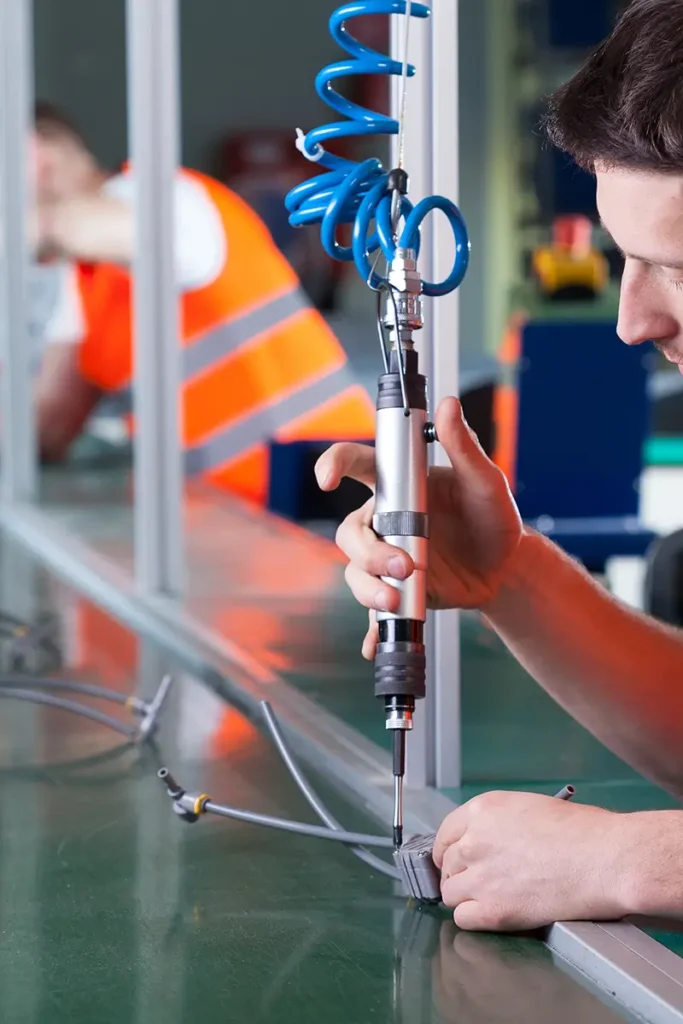
There are different models and configurations, such as inline, pistol-like, and right or left-angle. The most precise units can cost above $1,000 and are specially designed to work restlessly in high-precision industrial processes.
Uses
- Automotive Industry (Most commonly used for car manufacturing than repairing)
- Aircraft Industry (Manufacturing and repairing)
- Manufacturing (broadly used in assembly lines)
Pneumatic Drill
This pistol-like tool is similar to its electric counterparts and often has a higher power output.

It’s a practical tool for drilling hard materials and applications that require extensive use as they are sturdy and can be constantly lubricated by oil fed through the airline, among other features.
Uses
- DIY (Auto-repair and other home projects)
- Automotive (Some repair shops choose pneumatic drills over their electric counterparts)
- Construction (They are perfect for drilling concrete, installing anchor bolts, and other structural components)
- Manufacturing (They are used in several assembly lines that require human-operated and supervised drilling)
- Metalworking (They are ideal for fabrication shops that involve drilling thick steel planks)
- Mining, Quarrying, and Demolition (The largest versions of these tools are used for drilling blast holes in large demolitions or mines, breaking rocks, and other mining tasks)
- Woodworking (Furniture manufacturing, panel construction, assembly, etc.)
Air Impact Wrench
Pneumatic impact wrenches come in different sizes and power levels. They are one of the most efficient ways to remove stubborn fasteners and put a lot of torque on the tip of the operator’s finger.
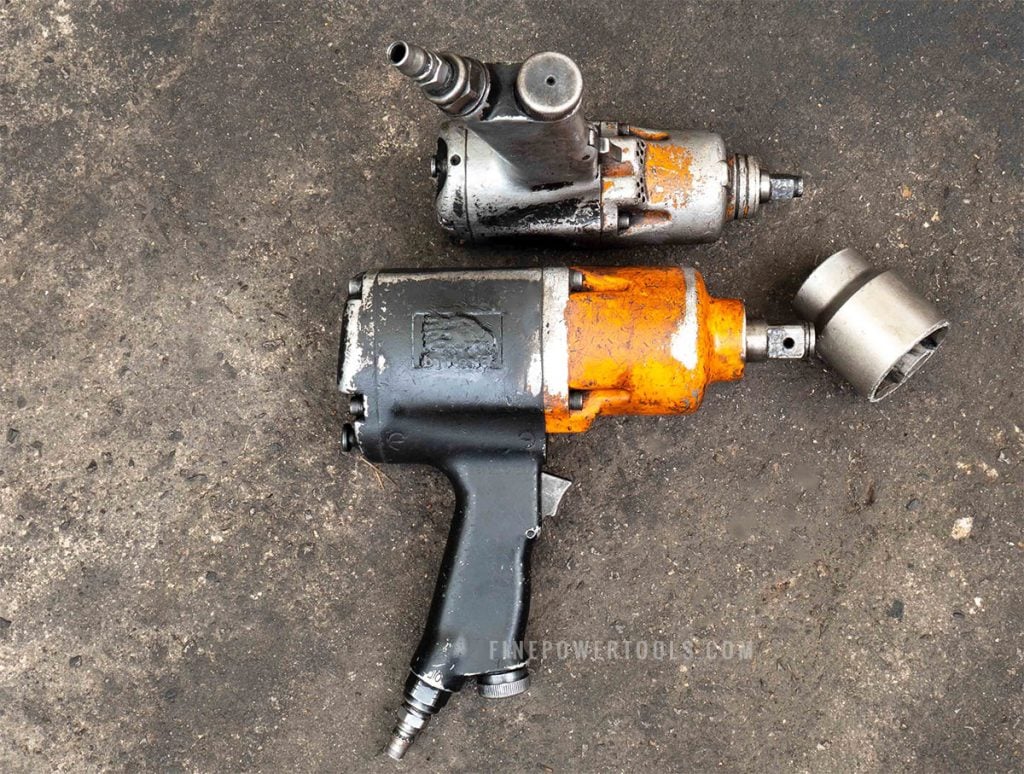
Air impact wrenches are among the most widely used pneumatic tools, from the ones frequently seen in any car repair shop to exceptionally strong tools used to fasten the huge joints of oil pipes, among other fantastic uses.
Uses
- Automotive (Assembling and disassembling tasks, production line and repair jobs)
- Construction (Working with sturdy fasteners)
- Manufacturing (Assembly lines including aircraft and maritime industries, heavy equipment, and machinery, etc.)
- Heavy-Duty Repairs (Heavy-duty machinery, railroads, military vehicles, among others)
- Oil Industry (Pipeline, valves, and other equipment fitting and unfitting)
Air Ratchet
A pneumatic ratchet is a power tool that applies rotational force on to the fasteners only in one direction. This makes it great for tightening and removing fasteners without repositioning the tool.
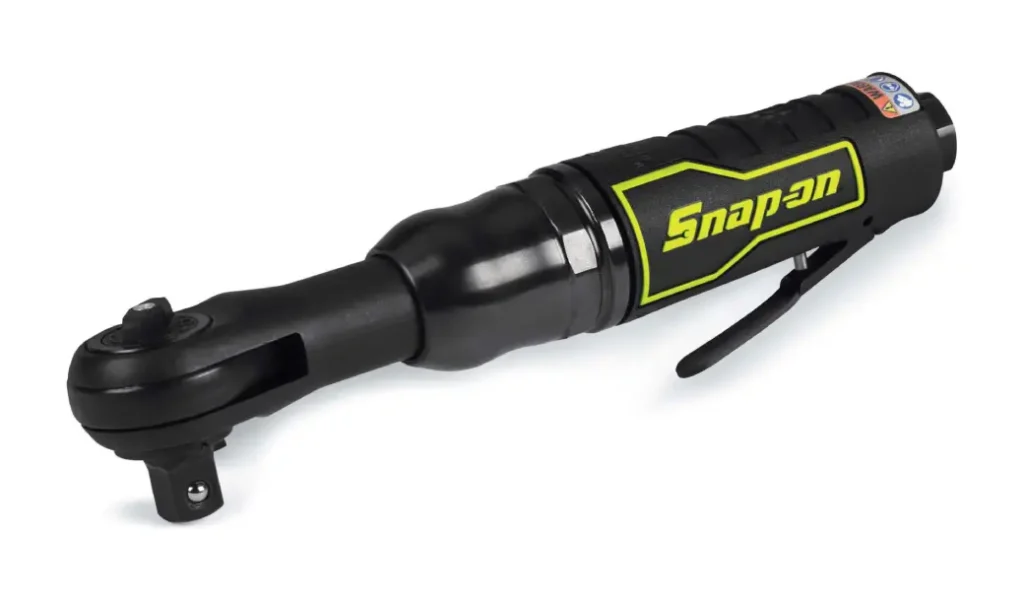
As it doesn’t have an impact mechanism, it doesn’t have so much breakaway torque as an impact wrench; however, it’s a reliable tool within its operative torque range. The simplest models feature torque and speed control but don’t offer torque regulation; that’s why they should only be used to snug up the fasteners, and the final torque must be set using a torque wrench.
Uses
- Automotive (Auto repair shops, parts assembly and disassembly)
- Construction (Installing and removing steel framing components, etc.)
- Machinery Maintenance
- Manufacturing (Assembly lines)
- Metalworking
Pneumatic Paint Sprayer
From a small airbrush to a sophisticated industrial spray painter, compressed air is an ally of hobbyists, artists, and professionals who want to paint with high precision and speed.

Paint guns are super practical for painting large surfaces like cars with outstanding consistency and speed. They can also be used to spray primer and coatings evenly, allowing excellent results.
Uses
- DIY/Hobbies
- Art (Paintings, model making, FX makeup)
- Automotive (They are broadly used in car repair shops)
- Construction (Painting exterior walls, applying furnishing coats, etc.)
- Furniture (For finishing or coating)
- Woodworking (Painting and varnishing wood projects)
Pneumatic Grease Gun
This tool works similarly to a paint gun. It’s great for assembly lines or jobs that require lubricating multiple parts in short periods.

The amount of grease the gun applies can be regulated, making it ideal for achieving consistent results.
Uses
- Automotive Industry (Car repair shops and small assembly lines)
- Aircraft (Aircraft fabrication and repair)
- General Maintenance (Large maintenance shops that work in series)
- Manufacturing (Small assembly and production lines)
- Maritime Industry (Engine lubrication)
- DIY (Lawnmower, chainsaws, and other tools’ maintenance)
Back to Contents

